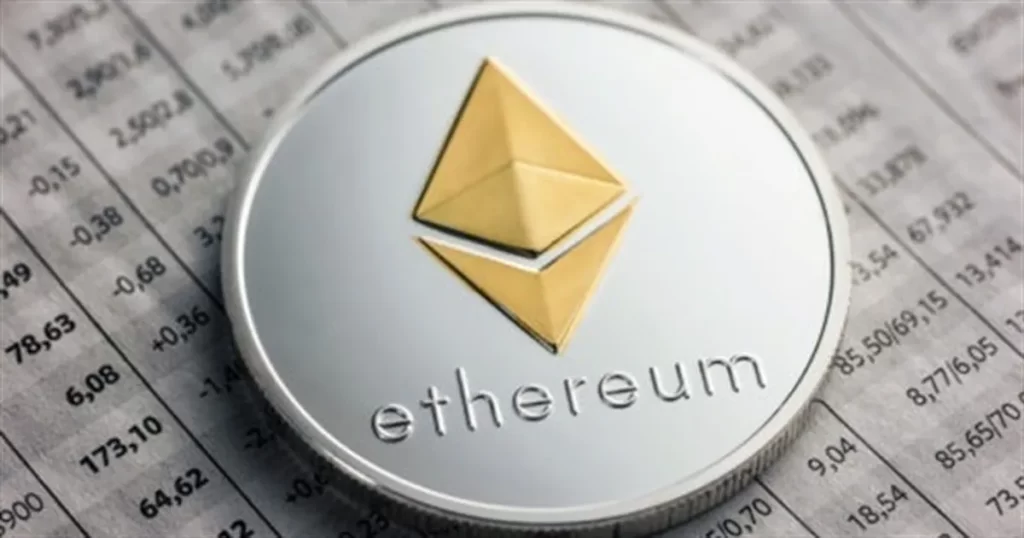Etherium isn’t just numbers on a screen or another cryptocurrency for traders. It’s a true digital universe that has burst into the tech world, overturning conventional wisdom about blockchain. Unlike Bitcoin, which only offers a decentralized currency, Ethereum is a platform capable of more than just transferring funds.
What is Ethereum, and how does it work?
A digital ecosystem powered by blockchain technology. Unlike centralized banking systems, where all data is controlled by a single player, here everything happens on a decentralized platform. Each member of the network retains a copy of the data, making the Ethereum blockchain secure and transparent.

How it works: It allows you to create smart contracts, autonomous programs that execute automatically once transaction conditions are met. No intermediaries, hidden fees, or human error. A smart contract can be used to close deals, rent properties, automatically pay for services, and much more.
Ether (ETH) is the foundation of the entire system.
Efirium operates with its internal currency, ether (ETH). It is needed to pay for all transactions, including the creation of smart contracts and the execution of decentralized applications. It is also used to reward miners who keep the network running. The Efirium cryptocurrency not only serves as a medium of exchange but also powers the entire platform.
Etherium vs. Bitcoin: Simple Blockchain or Complex System
Bitcoin and digital fuel are often compared, although their goals are drastically different. The Efirium cryptocurrency is not just a means of payment like Bitcoin. The former is a programmable platform for creating smart contracts and decentralized applications (dApps).
Smart Contracts: A Revolution in the World of Digital Transactions
Smart contracts are the main difference between Ethereum and Bitcoin. They allow processes to be automated, eliminating the need to trust the other party. For example, instead of hiring a lawyer to draft a contract, simply create a smart contract on the Ethereum platform, and all terms will be automatically enforced.
Ethereum Mining: The Algorithm Works in a New Way
 Mining on Etherium, unlike Bitcoin, originally used the Proof-of-Work method, but with the launch of Ether 2.0, this system underwent a revolutionary change. The network has now transitioned to Proof-of-Stake, a more energy-efficient and less costly model for participants.
Mining on Etherium, unlike Bitcoin, originally used the Proof-of-Work method, but with the launch of Ether 2.0, this system underwent a revolutionary change. The network has now transitioned to Proof-of-Stake, a more energy-efficient and less costly model for participants.
Proof-of-Stake allows network users to become validators and validate transactions based on the amount of Ether they have in their wallets. Mining as such is slowly becoming a thing of the past, giving way to more modern validation methods.
How does Etherium address environmental challenges?
The energy cost of mining has been one of Etherium’s main challenges. With the transition to Proof-of-Stake, this is being addressed, as there is no longer a need for powerful computers that consume enormous amounts of energy. Ether is now much more environmentally friendly, making it the preferred choice for those concerned about the future of the planet.
Advantages and Disadvantages of the Etherium Cryptocurrency
Advantages:
- Platform flexibility. The ability to create smart contracts and decentralized applications opens up a wide range of possibilities for developers.
- High level of security. Thanks to decentralization and blockchain technology, data on the network is secure.
- No dependence on intermediaries. All transactions are carried out without third-party intervention, which reduces costs and simplifies processes.
Disadvantages:
- High fees. During periods of high network activity, transactions can become more expensive due to increased gas costs.
- Scalability issues. Although the launch of Etherium 2.0 promises to solve these problems, for now the system faces challenges in managing a large number of transactions.
Etherium and NFTs: A Digital Revolution in the Arts
Etherium has become the platform that has led to an explosion in popularity of NFTs, non-fungible tokens. These unique digital objects, whether paintings, music, or virtual items, can be bought and sold through the Ethereum blockchain. NFTs have already changed the art world by giving artists the ability to sell their works directly through the platform.
How NFTs Have Changed Art
Previously, artists relied on galleries and agents to sell their works. Now, anyone can publish works on the Ethereum blockchain by creating an NFT and selling them directly to buyers. This opens the door to millions of people who were previously unable to enter the art market.
How to Buy and Store Ethereum Securely
To buy Ethereum, you need to register on a cryptocurrency exchange like Binance or Coinbase. Then, choose a suitable payment method and complete the transaction. The Ethereum cryptocurrency is readily available for purchase, and the process takes just a few minutes.
Ether can be stored in hot wallets (online wallets) for quick transactions or in cold wallets (hardware wallets), which offer maximum security. Cold keys store keys offline, making them less vulnerable to attacks.

Why Efirium is the cryptocurrency of the future
 In a world where technology is advancing at lightning speed, the cryptocurrency Ethereum remains at the forefront, offering solutions that make the digital world fairer, more secure, and more flexible. It’s an entire ecosystem that is changing not only the economy but also many other industries, from art to law.
In a world where technology is advancing at lightning speed, the cryptocurrency Ethereum remains at the forefront, offering solutions that make the digital world fairer, more secure, and more flexible. It’s an entire ecosystem that is changing not only the economy but also many other industries, from art to law.
 en
en  de
de  ar
ar  es
es  hi
hi  fr
fr  nl
nl  it
it  pt
pt  el
el 










